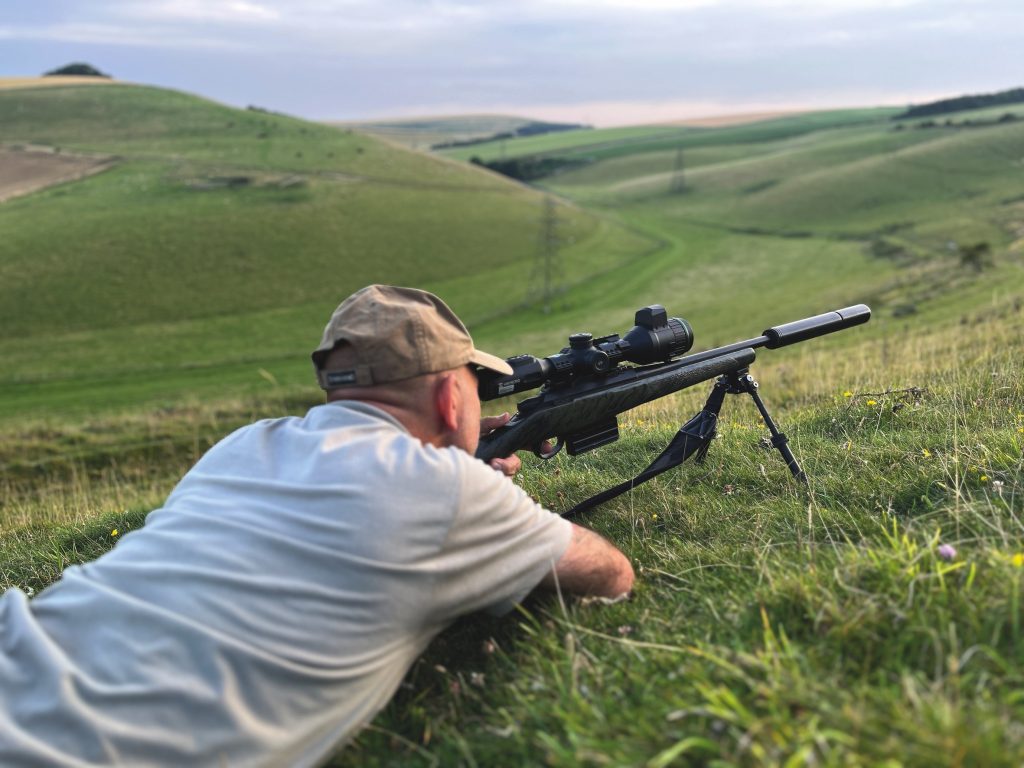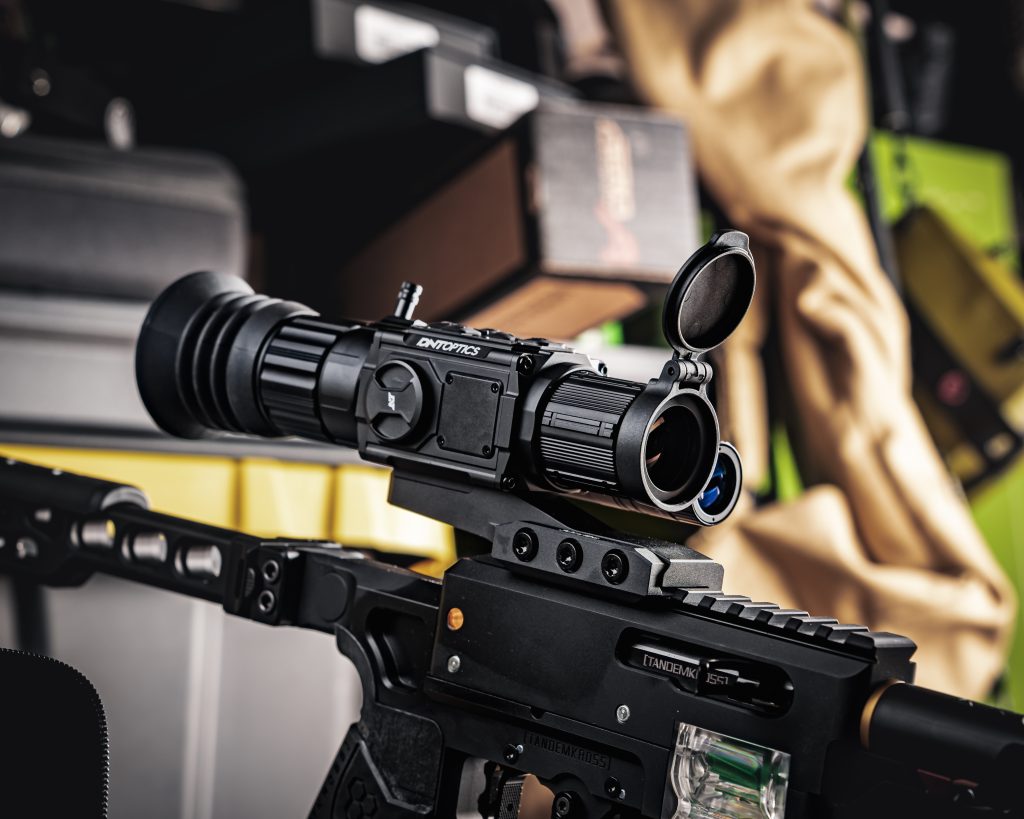ATN MARS LTV 256 SERIES
Paul Austin takes a look at a scope with improved functionality – and a price that provides a very solid first step into thermal hunting
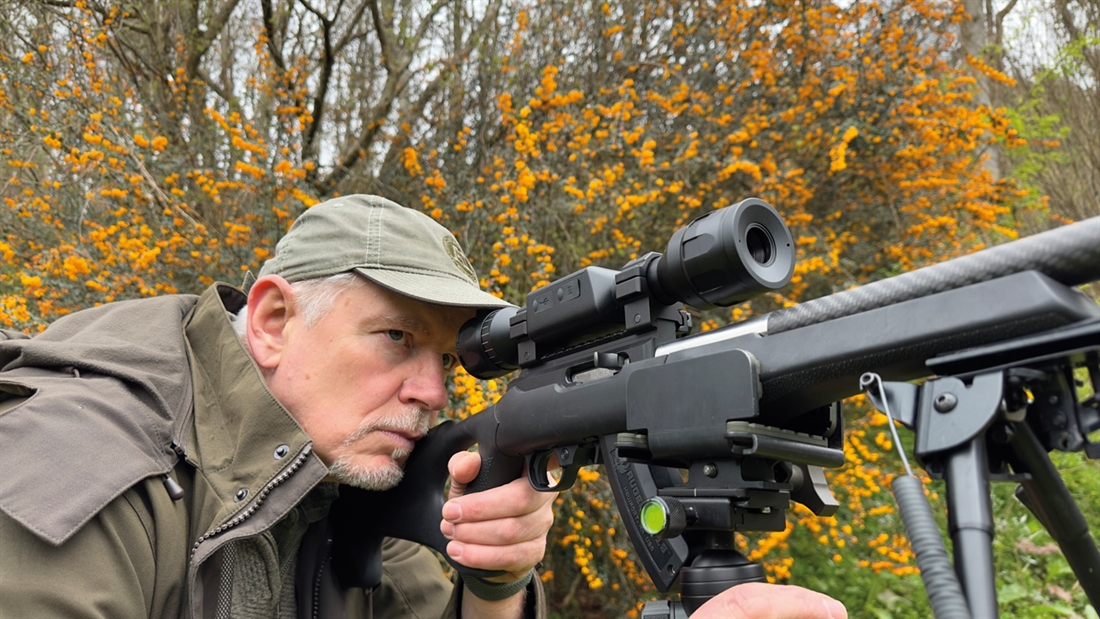
ATN’s Mars LTV units have been on the market for a while but they have wisely decided it’s high time for a facelift. Actually the term ‘facelift’ isn’t entirely accurate, as the new LTVs look pretty much identical to their predecessors, with all the upgrades being more technical than cosmetic.
There’s a drop in pixel count in relation to the 320×240 sensor used on the £1699 LTV from the original line-up. However, that comes with a significant reduction in price to £1,199 for the new LTV 256. That’s a cut of £500 and a factor that may prove very tempting for would-be thermal enthusiasts. There’s also quite a few variants in the range, from 1.5-4.5x all the way up to a 4-12x model.
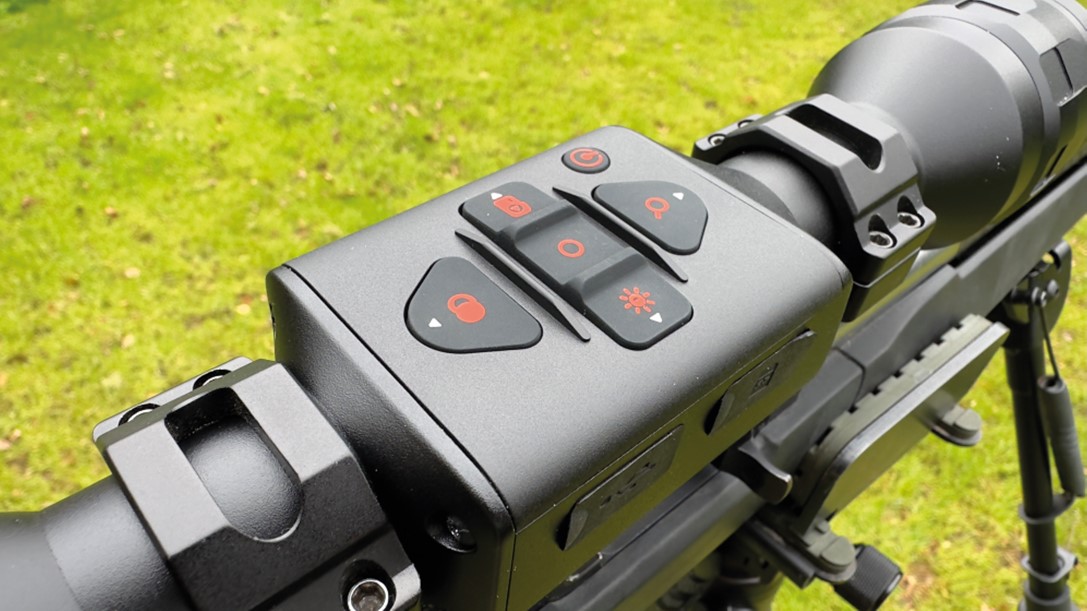
The complete thermal rifle scope collection comprises: ATN Mars LTV, 1.5-4.5x, 256×192, £949; 2-6x, 256×192, £999; 3-9x, 256×192, £1,199; 4-12x, 256×192, £1,349 Regardless of which you opt for, they’re all identical in terms for core functionality. While the two smaller scopes may seem particularly dinky for typical UK hunting applications you need to remember that these lower mag options are ideal for driven hunts in Europe or hog hunting across the pond, where off-hand shooting at close range is often the norm.
Unlike many high-end thermal scopes, which often bristle with every techno-function known to man, the LTV range comprises relatively simple devices. Some people (and indeed situations) don’t require all that extra functionality, with many shooters valuing affordable simplicity. All the bells and whistles of the latest ultra-high spec hardware is very nice to brag about but it doesn’t always see that much action in the field.
With this simplicity in mind, I’ll attempt to summarise the LTV 256 in a single paragraph – not something I’d attempt with most thermal scopes.
There’s a simple power button for on/off (no standby). There are buttons for click-through zoom selection, brightness and colour palettes, all of which are adjusted by simple cycling presses. The mag button, for example, cycles from the base of 3x, to 5.4x, 7.2x and max of 9x – an improvement on the 3x/6x/9x of its predecessor.
Brightness switches between low/ medium and high, while the rear palette button switches between black hot and white hot in a range of colour palettes. The central button either resets the sensor with a short press or opens the main menu if held longer. The remaining button toggles between pics with a short click or video recording if held down. That’s it!
Well, almost. There’s the usual dioptre adjustment at the rear and the focus ring up front, plus a USB-C port for changing plus a memory card slot, but in terms of technical geekery those basic button functions are about it. The main menu is also a pared-down affair with no ATN carousel, just a selection of four options across the top of the screen with sub-menu items beneath. NUC (reset) settings (auto or manual), pixel repair and six ret styles with seven colour options and three sensitivity and contrast levels offer a means of
fine-tuning the sensor.
Last but not least we come to zeroing. There’s no one-shot zero ‘freeze frame’ function, but it’s a very straightforward process. ‘Take a shot and tweak’ positioning is provided via the main control pad, which is retasked to move the crosshairs up, down, left and right as you hold on the centre of the target. There’s also a very handy zoom function in the zeroing menu to help further fine-tune your accuracy.
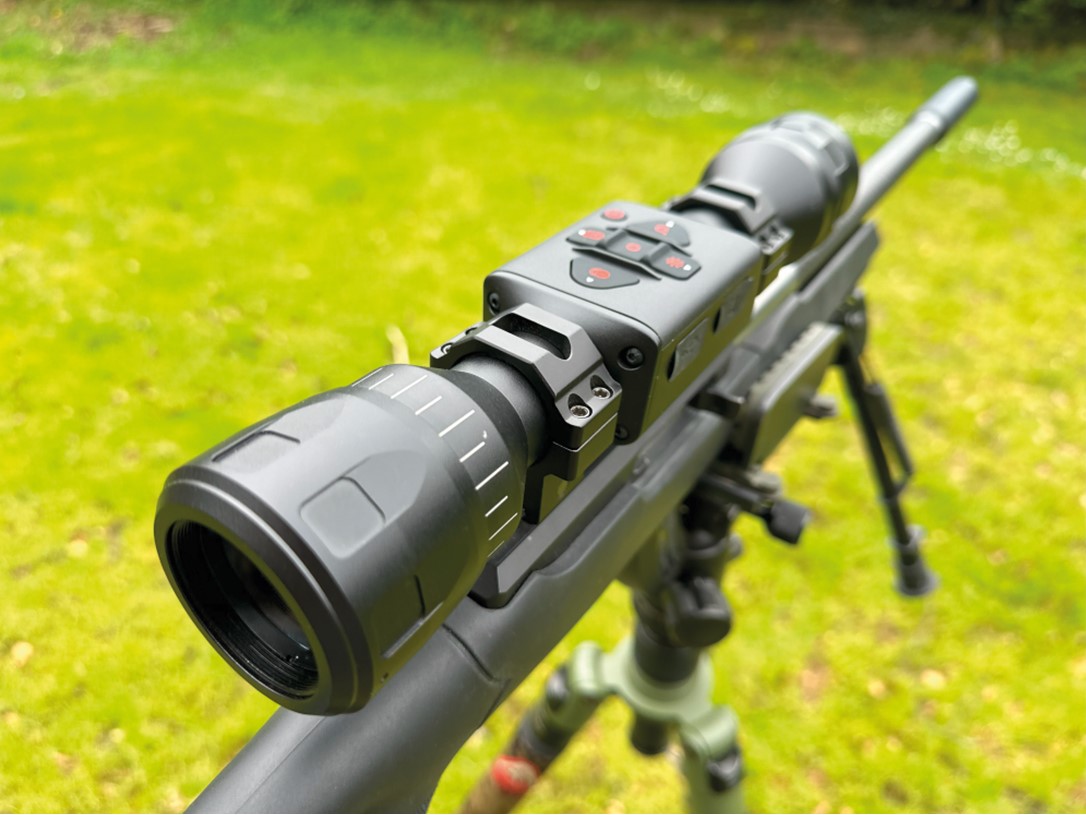
The new Mars LTV 256, like its predecessor, is a very simple scope. However, the latest incarnation now offers pic and video recording, something the older model did not. There’s no wi-fi connectivity and no access to ATN’s excellent ABL (optional ballistic laser rangefinder), but to be fair to ATN they do need to offer a unique higher-end upgrade path to temp the big spenders.
Does it shoot? Yes, it shoots absolutely fine, but it doesn’t do a lot else – which is ideal if basic thermal shooting is all you require. Zeroing is straightforward and helped by the zoom function. The image quality is surprisingly good for a smaller sensor and it would be the ideal tool for ratting and rabbitting, but caution would be required at extended range if you planned to pop it on a centrefire and do a bit of foxing.
If you want a bare-bones thermal scope that simply shoots, it’s great. Aside from the larger sensors of ATN’s other offerings, which have features like freeze frame that you can certainly live without, I’d say the LTV 256 is a very solid investment.
For example, the full-blown ATN Mars 5 320 3-12 (the closest match with a 320×240 sensor) retails at £1,999, which is £800 more expensive. It does have a larger sensor and quite a bit more functionality, but that’s a lot of money if you don’t need these features.
Note that scope rings are not supplied with the Mars LTV 256. I would also recommend adding a Picatinny rail on your rifle, as the central control panel is fairly large, making it potentially tricky to mount when attempting to get perfect eye relief. ATN’s own rings aren’t a bad choice as they’re quite slim compared with most and so offer a bit more wiggle room for mounting the scope.
All in all this is a very solid no-frills thermal that does all the basics well and generates a pretty impressive thermal image in the process. Ideal for FAC air rifles, rimfires and the occasional bit of close-range foxing.
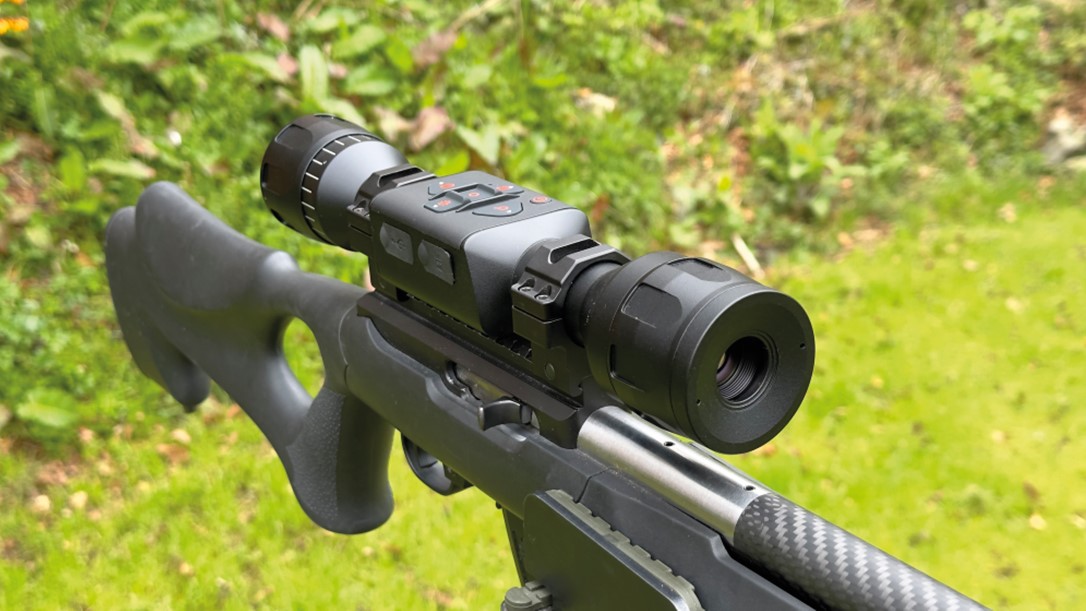
TECH SPECS
Resolution: 256×192 pixels/12μm
Magnifications: 1.5-4.5x, 2-6x, 3-9x, 4-12x
Field of view: 14.2×10.7°, 8.9×6.7°, 7.1×5.4°, 4.9×3.7°
Display resolution: OLED 1024×768 pixels
Eye relief: 90mm
Video record: Resolution 1024×768 pixels
3D accelerometer: Yes
Colour modes: White hot/black hot/colour modes
Reticles: Multiple patterns
Storage: Micro SD card, 4-64GB
Connectivity: USB Type C
Mount: 30mm standard rings (not included)
Battery: Internal lithium ion, 9+ hours
IP rating: Weather resistant
Dimensions: 292x56x55mm (11.5×2.2×2.2″)
Weight: 1.4lb (650g)
Warranty: 3 years
Prices: £949 to £1349
ATN Europe: www.atneu.com
Related Articles
Get the latest news delivered direct to your door
Subscribe to Rifle Shooter
Elevate your shooting experience with a subscription to Rifle Shooter magazine, the UK’s premier publication for dedicated rifle enthusiasts.
Whether you’re a seasoned shot or new to the sport, Rifle Shooter delivers expert insights, in-depth gear reviews and invaluable techniques to enhance your skills. Each bi-monthly issue brings you the latest in deer stalking, foxing, long-range shooting, and international hunting adventures, all crafted by leading experts from Britain and around the world.
By subscribing, you’ll not only save on the retail price but also gain exclusive access to £2 million Public Liability Insurance, covering recreational and professional use of shotguns, rifles, and airguns.
Don’t miss out on the opportunity to join a community of passionate shooters and stay at the forefront of rifle technology and technique.



